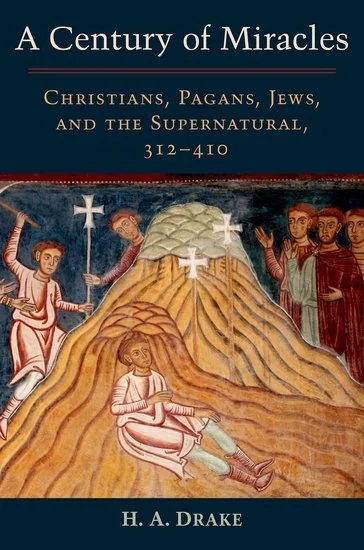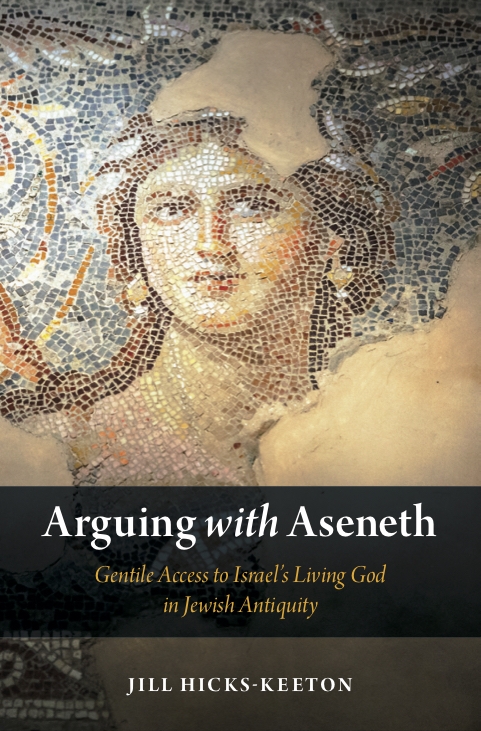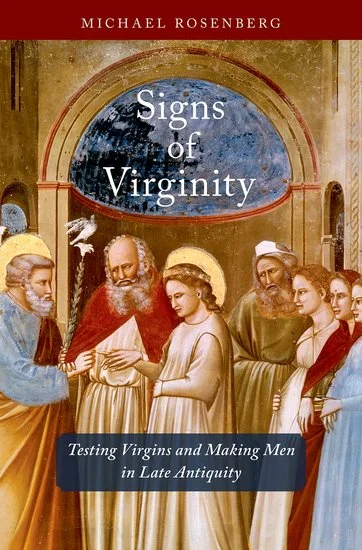But decoding slanderous language is not just a complicated task for modern scholars; the Gospel of John’s earliest interpreters also chewed over the anti-Jewish language in the text. In Exegeting the Jews, Michael Azar examines the earliest reception of John’s anti-Jewish language.
Read MoreWeek in Review (10/19/2018)
Mosaic of a philosopher sitting on a rock | Likely sixth century, currently housed in the Great Palace Mosaic Museum, Istanbul | Image Source
Mosaic of a philosopher sitting on a rock | Likely sixth century, currently housed in the Great Palace Mosaic Museum, Istanbul | Image Source
This Week: Full-body resurrection, rhetorician rabbis, invented Christianity, computational digital humanities, heaps of ancient pots, even more apocrypha - and more!
Read MoreResurrection: Why, how, and for whom?
By shifting away from the relationship between resurrection and embodiment, I read “behind” or at least “around” the flashpoints surrounding the nature of the resurrected body.
Read MoreBook Note | Rabbis and Classical Rhetoric: Sophistic Education and Oratory in the Talmud and Midrash
“Whether they received these forms from Cicero or came to them independently, the fact that the rabbis are not alone in producing these forms makes clear that the strategy is effective, and Hidary’s rhetorical analyses ably show what that strategy is. A literary work need not be efficient or conclusive to be persuasive.”
Read MoreWeek in Review (10/12/2018)
Solidus of Constantine I (326CE, Rome) | Exhibited in the Bode-Museum, Berlin | Image Source
Solidus of Constantine I (326CE, Rome) | Exhibited in the Bode-Museum, Berlin | Image Source
This Week: Double book notes, Constantine and miracles, even *more* noncanonical scriptures, manuscripts everywhere, the Nubian Tomb of Peniut – and more!
Read MoreBook Note | Not All Dead White Men
Sarah Bond reviews Donna Zuckerberg’s Not All Dead White Men: “A new generation of classicists, archaeologists, and premodern historians have begun to realize that an insulated approach to scholarship is itself a form of privileged monasticism that we can no longer retreat to. In Not All Dead White Men, Zuckerberg looks into the crevices of the internet and into academia with a jussive command: “Fiat lux” (Let there be light). It is up to us to keep the lights on.”
Read MoreBook Note | A Century of Miracles: Christians, Pagans, Jews, and the Supernatural, 312-410
Framing his book with the two great miracles of Constantine and Theodosius, Drake attempts to tease out exactly how this discourse functioned in late antiquity, especially for Christians.
Read MoreWeek in Review (10/5/18)
Hieroglyphic spolia | White Monastery (ⲡⲓⲙⲟⲛⲁⲥⲧⲏⲣⲓⲟⲛ ⲟⲩⲱⲃϣ), near Upper Egyptian Sohag | Image Source
Hieroglyphic spolia | White Monastery (ⲡⲓⲙⲟⲛⲁⲥⲧⲏⲣⲓⲟⲛ ⲟⲩⲱⲃϣ), near Upper Egyptian Sohag | Image Source
This Week: Monastic philosophy of mind, damnatio memoriae, Gnosticism, Herculaneum scrolls, DIY iron gall ink, bonus hieroglyphic spolia – and more!
Read MoreBook Note | Monasteries and the Care of Souls in Late Antique Christianity: Cognition and Discipline
In considering the monastic mind(s) of late antiquity, Paul Dilley rejects models entrenched in a Cartesian dualism—opting instead to explore modes of embodied cognition. He proposes that the cognitive training practiced by early Christian monks led to the “gradual acquisition of a new and particularly monastic theory of mind.”
Read MoreDuke/UNC CLAS Symposium Report | De Malo: Evil and Theodicy in Late Antiquity
This year’s conference took up discourse about evil in late antiquity as a test case. Might the ever-pressing issue of theodicy provide a topic on which authors of various late ancient pieties could both demonstrate their commonalities and distinguish their competing claims?
Read MoreWeek in Review (9/28/18)
Carved marble sarcophagus section | 3rd-4th century, currently held in the Jewish Museum (New York) | Image Source
Carved marble sarcophagus section | 3rd-4th century, currently held in the Jewish Museum (New York) | Image Source
This Week: Roasting Romans, Jerusalem destruction, stunning Jordan tomb discovery, classroom digital humanities, even a sprinkle of Slavonic apocrypha – and more!
Read MoreDissertation Spotlight | Sarah Emanuel, "Roasting Rome"
As the title of this project suggests, Revelation “roasts” Rome—both humorously and via imagined incendiary flame (see Rev. 17:16; 18:8)—to the extent of creating a new world order in which the implied Jewish Other reigns supreme over and against the Roman imperial order.
Read MoreBook Note | Rabbinic Tales of Destruction
“Beautifully written and clearly organized, the strength of Belser’s method for reading rabbinic tales is in not fitting the Bavli into any one theoretical framework, but rather in allowing her hermeneutic lenses to shift along with the text.”
Read MoreWeek in Review (9/21/18)
Arsosolio fresco of Christ and the Twelve Apostles | Fourth-century, from the Catacombs of Domitilla, Rome | Image Source
Arsosolio fresco of Christ and the Twelve Apostles | Fourth-century, from the Catacombs of Domitilla, Rome | Image Source
This Week: Jill Hicks-Keeton on covenant without circumcision, early Christian women, Yom Kippur, Armenia at the Met, dramatic Iznik basilica discovery – and more!
Read MoreCovenant without Circumcision? What to Do with a Woman
The character of Aseneth becomes transformed from material mother of the sons of Joseph to mythic mother-figure for the tribes of Israel and penitent nations who join in worshiping Israel’s God.She has become, in this ancient tale, a productive site of intervention in Israel’s story—a matriarch who matters in the history of and for the future of God’s covenanted community.
Read More“Not Veiled in Silence”: The Challenge of Writing about Early Christian Women
How did women of various regions, backgrounds, situations, and temperaments assume authority, exercise power, and shape both their legacy and the legacy of Christianity?
Read MoreWeek in Review (9/14/18)
Cuneiform tablet with instructions for dying wool | Neo-Babylonian, found at Sippar, currently in the collection of the British Museum (BM62788) | Image Source
Cuneiform tablet with instructions for dying wool | Neo-Babylonian, found at Sippar, currently in the collection of the British Museum (BM62788) | Image Source
This Week: Disciplinary shifts with Erich Gruen, ancient virginity, law and gender, Hebrew manuscripts, a surprising amount of exile – and more!
Read MoreA Wandering Jew: Some Reflections
Erich Gruen with a retrospective of his work: “If a consistent thread runs through my studies of Jewish history in the context of classical antiquity, it can be found in resistance to the common portrayal of Jews as victims.”
Read MoreBook Note | Signs of Virginity
Rosenberg’s book sets out to examine rabbinic paradigms of how virgin women’s bodies work, how the loss of that virginity happens, and therefore, what evidence proves the existence of virginity.
Read MoreWeek in Review (9/7/18)
Cover and first surviving page of the Syriac Life of Barsawma (d. ca.492) | Undated MS from Urfa | Image Source
Cover and first surviving page of the Syriac Life of Barsawma (d. ca.492) | Undated MS from Urfa | Image Source
This Week: Brent Nongbri, Dead Sea Scrolls fakery, looted antiquity raids, Call for Papers up the wazoo, ancient Arabs, excavation found footage – and more!
Read More


















